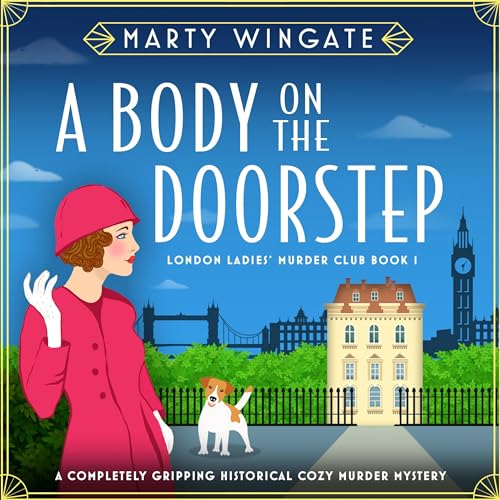 A Body on the Doorstep (London Ladies' Murder Club, #1) by Marty Wingate
A Body on the Doorstep (London Ladies' Murder Club, #1) by Marty Wingate Narrator: Naomi Frederick
Format: audiobook, eARC
Source: supplied by publisher via NetGalley
Formats available: paperback, ebook, audiobook
Genres: cozy mystery, historical mystery
Series: London Ladies' Murder Club #1
Pages: 288
Length: 9 hours and 3 minutes
Published by Bookouture on January 11, 2024
Purchasing Info: Author's Website, Publisher's Website, Amazon, Barnes & Noble, Bookshop.org, Better World Books
Goodreads
Fiercely independent Mabel Canning can’t wait to begin working for the Useful Women’s Agency. But when she discovers a body on her client’s doorstep, it’s time to add solving murders to her job description…
London, 1921: Mabel Canning is proud to be a modern woman working for the Useful Women’s Agency, carrying out tasks for gentlewomen from flower arranging to washing muddy dogs. But when she answers the door for wealthy widow Rosalind Despard, she almost chokes on her cucumber sandwich when she finds a soldier’s body on the doorstep.
As she offers tea to the policemen of Scotland Yard, Mabel can’t resist getting drawn into the investigation. Who was the mysterious dead man? And why was he holding a letter for Rosalind, written by her husband on the day he disappeared?
As Mabel hunts for clues, she joins forces with Rosalind’s handsome brother, former detective Park Winstone, and his adorable terrier, Gladys. But when Mabel suspects she is being followed, the detective duo know that time is running out before the killer strikes again.
As she investigates, Mabel discovers dusty old photographs that help her reveal the soldier’s true identity. But as she gets closer to uncovering the young man’s murderer, she knows she’s also one step closer to danger... Can she outsmart the killer and save Park and Rosalind before they also turn up dead as doornails?
A totally unputdownable and utterly charming Golden Age cozy mystery from USA Today bestselling author Marty Wingate. Perfect for fans of Agatha Christie, Richard Osman, Verity Bright and T.E. Kinsey.
My Review:
Miss Mabel Canning has arrived in London in 1921 after FINALLY managing to convince her father that it was no longer scandalous for an unmarried woman to live on her own and support herself in the big city. She’s also running away from her whole village’s firmly held belief that she should marry the local vicar – who is also her best friend’s widower after the ravages of the Spanish Flu epidemic.
Mabel has always dreamed of going to London and living on her own, and she sees poor, dear Ronald as a brother and absolutely NOT a potential spouse. In her mid-30s, Mabel isn’t even certain she wants one of those. She’s certain she doesn’t want any of the available men back home in Peasmarch.
We meet her on her first assignment for the Useful Women’s Agency. She’s been tasked with helping newly declared widow Rosalind Despard at the wake for her late and much lamented husband. But Rosalind isn’t even certain that her husband Guy is actually dead. He’s been missing for seven years and has been declared legally dead so that his business affairs can be taken care of. It’s all about closure – a closure that Rosalind isn’t sure she’s either ready or even eligible for.
So it’s a very strange wake, under rather unusual circumstances. Circumstances that only get stranger and even more unusual when a dead man thumps into the front door with a seven-year-old letter from Guy Despard in his pocket.
No one knows who the dead man is. No one knows what the letter has only turned up seven years after Guy’s disappearance. No one is entirely certain whether the letter is real or merely an elaborate hoax.
But the dead body is certainly real enough to bring the police to the house and open up all the questions and insinuations that Rosaline Despard has been dealing with all these years.
This is certainly not closure, not for Rosalind and not for any of her friends and family. And not for Miss Mabel Canning, who has befriended the widow and is determined to help her get that closure – one way or another – while doing her best to keep her own body and soul together along the way.
Escape Rating A-: This was lovely, very much a case of the right book at the right time, as I’ve been in a bit of a murder-y mood this week – actually this whole entire year so far.
From the beginning, Mabel Canning’s situation at the Useful Women’s Agency reminded me of something, and it’s a something that very much fits. The ‘Golden Age’ detective series about Lord Peter Wimsey, written by Dorothy Sayers, is also set in the 1920s, and the world has some of the same feel even if Mabel is seeing it from much more towards the middle of the social strata.
But during the Wimsey series, Lord Peter funds an agency for independent women, very much like the Useful Women’s Agency. He hires Miss Katharine Climpson’s agency to investigate situations in various cases where women will have entry and he does not, much like Mabel Canning uses the Useful Women’s Agency to get herself involved in a murder investigation.
Unlike Miss Climpson, Miss Kerr and the Useful Women’s Agency really existed – without Miss Canning’s particular specialty – because there was a need for independent women to make their own livings after World War I followed by the flu epidemic wiped out much of the generation of men they would otherwise have married.
The mystery in The Body on the Doorstep is quite nefarious, multi-layered and much closer to home than anyone imagined at its beginning. Well, not the police as they ALWAYS assumed that the wife did it. An erroneous assumption, of course, otherwise we wouldn’t have a mystery on our hands.
The story is cozy without being twee, and its setting in London as seen through the eyes of a woman on the verge of ‘middle-age’ gives her perspective a combination of freshness and maturity at the same time.
There are plenty of murders, and they are often all too gruesome, and yet the details are smudged just enough that the reader ‘gets’ the gruesomeness without being bathed in the blood – so to speak.
But the story works well because we’re following Mabel Canning, and her opening herself to the city and all its possibilities for independence and purpose makes her interesting to follow. We empathize with her every bit as much as she empathizes with the characters who become caught up by the ever expanding tendrils of the murder and its cover up.
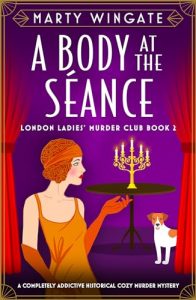 I listened to this one for about half its length, and the narrator gave Mabel just the right voice for her inner thoughts and outer expressions. But I got so caught up in the mystery itself that I had to see whodunnit and switched to text because it’s a)faster and b) a whole lot easier to thumb to the end. Although I resisted that temptation by simply finishing in one sitting.
I listened to this one for about half its length, and the narrator gave Mabel just the right voice for her inner thoughts and outer expressions. But I got so caught up in the mystery itself that I had to see whodunnit and switched to text because it’s a)faster and b) a whole lot easier to thumb to the end. Although I resisted that temptation by simply finishing in one sitting.
I liked Mabel, I enjoyed her two steps forward, one step back, looking over her shoulder investigation through friendship and a sincere desire to help, and am happy to say that there are two more books in this series – at least!
Particularly because there’s a hint of a possibility of romance for Mabel in this first book, and I’m hoping that we’ll learn whether they will or they won’t in A Body at the Seance, which is out now, and A Body at the Dance Hall, coming in April.

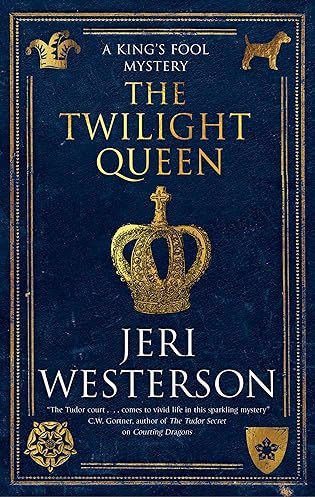 The Twilight Queen (A King's Fool mystery, 2) by
The Twilight Queen (A King's Fool mystery, 2) by  That his story – or rather the reinterpretation of his story through the characters of his six wives – has been reimagined yet again in the Tony Award winning Broadway play,
That his story – or rather the reinterpretation of his story through the characters of his six wives – has been reimagined yet again in the Tony Award winning Broadway play, 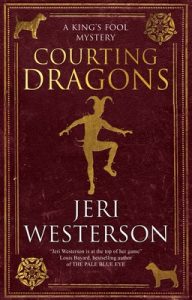 Escape Rating B: Genre blends such as historical mystery are always a balancing act – much like Will Somers position is a balancing act between making his sovereign laugh, forcing his master to stop and think – and keeping both his job and his head.
Escape Rating B: Genre blends such as historical mystery are always a balancing act – much like Will Somers position is a balancing act between making his sovereign laugh, forcing his master to stop and think – and keeping both his job and his head.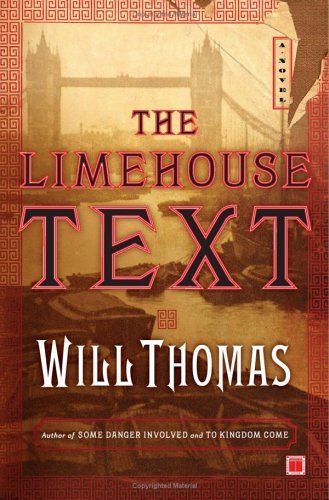 The Limehouse Text (Barker & Llewelyn, #3) by
The Limehouse Text (Barker & Llewelyn, #3) by 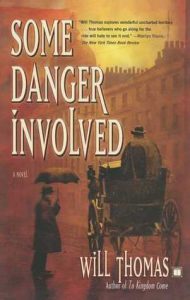 I was feeling in a bit of a murder-y mood this week – reading-wise at least. Which seems entirely fitting as we’re ‘killing’ 2023 this weekend and ringing in 2024.
I was feeling in a bit of a murder-y mood this week – reading-wise at least. Which seems entirely fitting as we’re ‘killing’ 2023 this weekend and ringing in 2024. 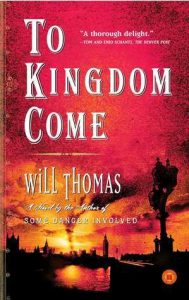 Escape Rating A+: One thing drove me utterly bananas during my reading of The Limehouse Text. I had the vague impression, not that I’d read this before, but that the Jeremy Brett Sherlock Holmes series had also tackled a story set in Limehouse – London’s Victorian version of Chinatown – but couldn’t track down precisely which story. I think it may have been
Escape Rating A+: One thing drove me utterly bananas during my reading of The Limehouse Text. I had the vague impression, not that I’d read this before, but that the Jeremy Brett Sherlock Holmes series had also tackled a story set in Limehouse – London’s Victorian version of Chinatown – but couldn’t track down precisely which story. I think it may have been 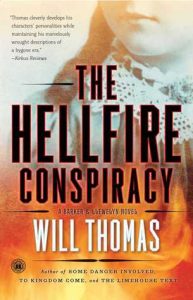 In the end, this is a clever, convoluted mystery, solved but not truly resolved by fascinating characters, steeped in a culture and a perspective that was not treated with any kind of respect in its time and about which stereotypes promoted during this period still linger. The reader is inexorably drawn in by the mystery and the setting, and left with both the satisfaction of at least some just desserts being served – as a mystery should – while still reeling from the marvelously presented microcosm of all the reasons why ‘colonialism’ is such a disgustingly dirty word in so many places around the globe to this very day.
In the end, this is a clever, convoluted mystery, solved but not truly resolved by fascinating characters, steeped in a culture and a perspective that was not treated with any kind of respect in its time and about which stereotypes promoted during this period still linger. The reader is inexorably drawn in by the mystery and the setting, and left with both the satisfaction of at least some just desserts being served – as a mystery should – while still reeling from the marvelously presented microcosm of all the reasons why ‘colonialism’ is such a disgustingly dirty word in so many places around the globe to this very day.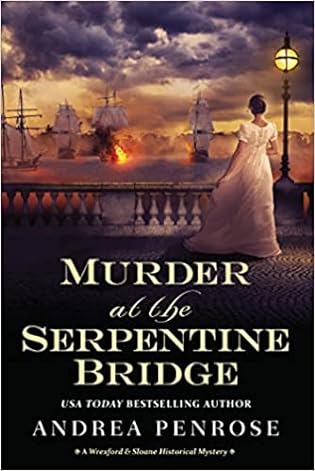 Murder at the Serpentine Bridge (Wrexford & Sloane, #6) by
Murder at the Serpentine Bridge (Wrexford & Sloane, #6) by  As the previous book in this series,
As the previous book in this series, 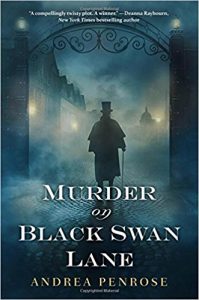 Escape Rating A: This was the right book at the right time, and I clearly waited enough time after
Escape Rating A: This was the right book at the right time, and I clearly waited enough time after  Meanwhile, everyone is chasing everyone else’s tails into danger, as the government’s intelligence services are unwilling to let the right hand know what the left hand is doing (shades of yesterday’s book) and everyone is unwittingly keeping vital clues from even their nearest and dearest.
Meanwhile, everyone is chasing everyone else’s tails into danger, as the government’s intelligence services are unwilling to let the right hand know what the left hand is doing (shades of yesterday’s book) and everyone is unwittingly keeping vital clues from even their nearest and dearest. The Butterfly Collector by
The Butterfly Collector by 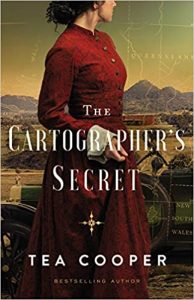 Escape Rating B: I have to say that I ended up with mixed feelings all over the place while listening to and reading The Butterfly Collector. In the end, the 1922 story carried me through, but it’s the 1868 story that held the most bone-chilling horrors. Real-life horror, like revenge, is compellingly served ice cold – and the horrors of this story, based on real historical events – had plenty of chills to deliver.
Escape Rating B: I have to say that I ended up with mixed feelings all over the place while listening to and reading The Butterfly Collector. In the end, the 1922 story carried me through, but it’s the 1868 story that held the most bone-chilling horrors. Real-life horror, like revenge, is compellingly served ice cold – and the horrors of this story, based on real historical events – had plenty of chills to deliver.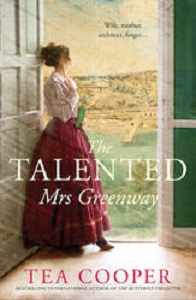 Once I switched to text it all got better, and I was able to finally be captured by the increasingly frenetic pace of the mystery of it all. Not just a terrible crime, but decades of a profitable series of terrible crimes come to light and sticks a knife into Verity’s heart AND her perceptions of her family’s history in a way that makes the whole story both sing and sting at the same time.
Once I switched to text it all got better, and I was able to finally be captured by the increasingly frenetic pace of the mystery of it all. Not just a terrible crime, but decades of a profitable series of terrible crimes come to light and sticks a knife into Verity’s heart AND her perceptions of her family’s history in a way that makes the whole story both sing and sting at the same time.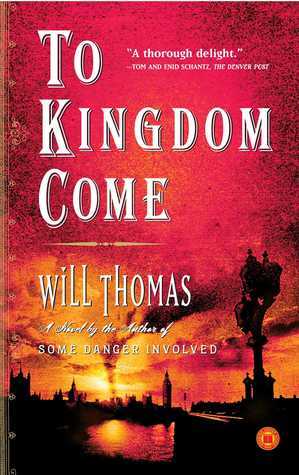 To Kingdom Come (Barker & Llewelyn, #2) by
To Kingdom Come (Barker & Llewelyn, #2) by 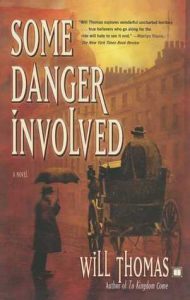 After the events of the first marvelous book in this series,
After the events of the first marvelous book in this series, 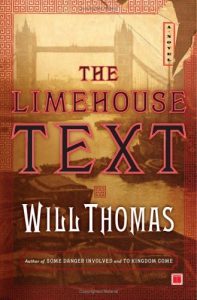 What kept me glued to my seat (as this turned out to be a one-sitting/one-evening read) was the way that it dove head-first both into the heart of its point-of-view character Thomas Llewelyn and into the hearts and motivations of the Irish Republican Brotherhood faction members, and the difficulty that Llewelyn had separating himself from them and his sympathy for their cause even as he decried their methods and worked to bring them down, doing his best to keep them all from being blown “to kingdom come”.
What kept me glued to my seat (as this turned out to be a one-sitting/one-evening read) was the way that it dove head-first both into the heart of its point-of-view character Thomas Llewelyn and into the hearts and motivations of the Irish Republican Brotherhood faction members, and the difficulty that Llewelyn had separating himself from them and his sympathy for their cause even as he decried their methods and worked to bring them down, doing his best to keep them all from being blown “to kingdom come”.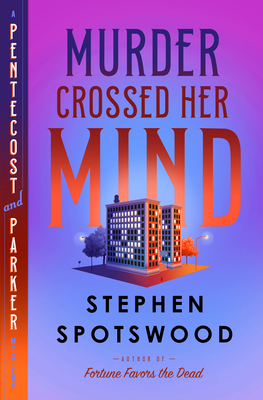 Murder Crossed Her Mind (Pentecost and Parker #4) by
Murder Crossed Her Mind (Pentecost and Parker #4) by 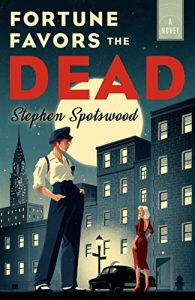 It’s still 1947 in this fourth entry in the
It’s still 1947 in this fourth entry in the 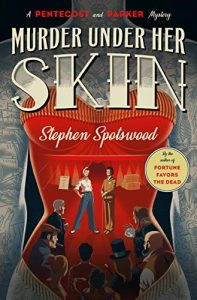 Escape Rating A++: Murder Crossed Her Mind was an actual, literally, honest-to-goodness one sitting read for me. I started it thinking I’d read for an hour or so before bed, and then just stayed there reading. And stayed. And STAYED. Until it was done nearly four hours later. Hence that A++ rating because I simply could not put this down until Pentecost and Parker knew everything and staged a great – but still slightly speculative – reveal at the end.
Escape Rating A++: Murder Crossed Her Mind was an actual, literally, honest-to-goodness one sitting read for me. I started it thinking I’d read for an hour or so before bed, and then just stayed there reading. And stayed. And STAYED. Until it was done nearly four hours later. Hence that A++ rating because I simply could not put this down until Pentecost and Parker knew everything and staged a great – but still slightly speculative – reveal at the end.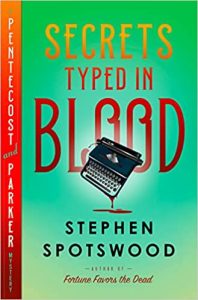 It was also a bit different because it was never about what enemies Vera might have made – because she didn’t. Instead, it was about which secret someone could least afford her to reveal, which made the investigation just that much more complicated.
It was also a bit different because it was never about what enemies Vera might have made – because she didn’t. Instead, it was about which secret someone could least afford her to reveal, which made the investigation just that much more complicated.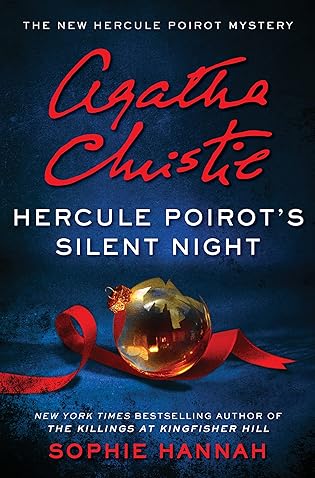 Hercule Poirot's Silent Night (New Hercule Poirot Mysteries, #5) by
Hercule Poirot's Silent Night (New Hercule Poirot Mysteries, #5) by  Scotland Yard Inspector Edward Catchpool and his friend and mentor Hercule Poirot are just settling in to a two-week staycation (even if that term had not been invented yet) in London, staying in Poirot’s rather palatial apartment at Whitehaven Mansions, attended by Poirot’s inestimable butler, George, for the duration of the holidays.
Scotland Yard Inspector Edward Catchpool and his friend and mentor Hercule Poirot are just settling in to a two-week staycation (even if that term had not been invented yet) in London, staying in Poirot’s rather palatial apartment at Whitehaven Mansions, attended by Poirot’s inestimable butler, George, for the duration of the holidays.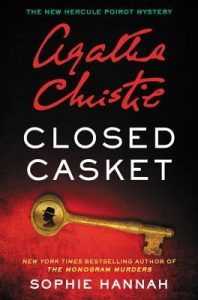 Escape Rating B-: Looking back at my reviews of the previous books in this
Escape Rating B-: Looking back at my reviews of the previous books in this 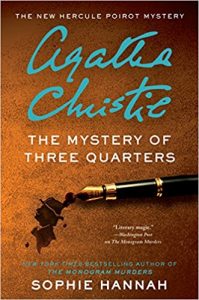 A lot of the ‘action’ of the story, particularly the ‘fair play’ aspects of the mystery and its resolution, were handled as more ‘telling’ than showing, as the two detectives were often working separately, and only caught up at irregular intervals through meticulous reports – which is how the reader gets caught up as well.
A lot of the ‘action’ of the story, particularly the ‘fair play’ aspects of the mystery and its resolution, were handled as more ‘telling’ than showing, as the two detectives were often working separately, and only caught up at irregular intervals through meticulous reports – which is how the reader gets caught up as well.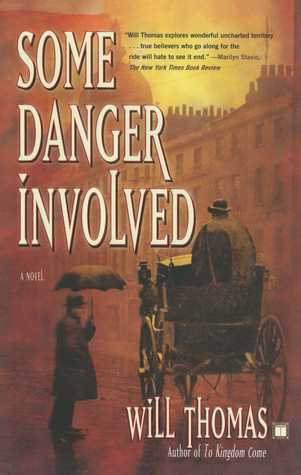 Some Danger Involved (Barker & Llewelyn, #1) by
Some Danger Involved (Barker & Llewelyn, #1) by 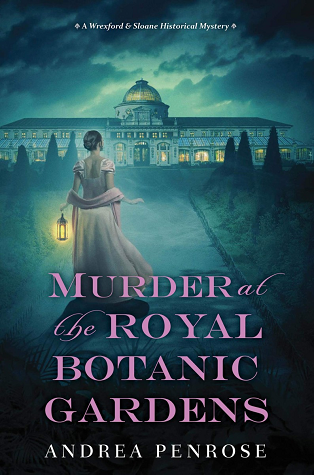 Murder at the Royal Botanic Gardens (Wrexford & Sloane, #5) by
Murder at the Royal Botanic Gardens (Wrexford & Sloane, #5) by 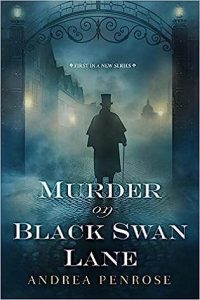 This fifth book in the
This fifth book in the  Before Charlotte can be truly happy, all of those swords hanging over her head have to be carefully taken down, while she and Wrexford are in the midst of solving a criminal conspiracy that turns out to have more heads than Hydra. That the sheer tangle of threats coming their way makes both of them realize just how many hostages to fortune they have gathered around themselves over the course of their investigations adds to Charlotte’s worry and angst.
Before Charlotte can be truly happy, all of those swords hanging over her head have to be carefully taken down, while she and Wrexford are in the midst of solving a criminal conspiracy that turns out to have more heads than Hydra. That the sheer tangle of threats coming their way makes both of them realize just how many hostages to fortune they have gathered around themselves over the course of their investigations adds to Charlotte’s worry and angst.